Topas
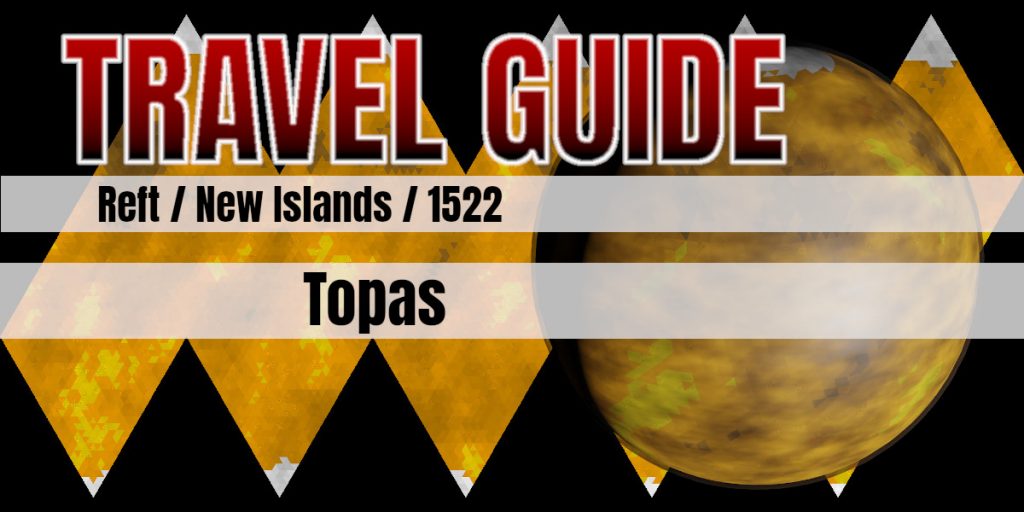
Topas is simply described as a single radioactive desert, where people shelter in the ruins of war torn subterranean cities. The atmosphere is too thin to breathe, and water is almost non-existent. The cities are ruled by a single huge bureaucracy that stifles free enterprise, and strictly controls the distribution of power, air, water and food.
From above, Topas looks aptly named, for it is a world of yellow deserts, capped at the poles by carbon dioxide ice, and covered with a thin haze of a dusty atmosphere. It’s quite apparent that this is a dry, barren world that isn’t very habitable.
Despite that, Topas has a population of 300 million, most of whom live in sealed cities built into craters or constructed underground. The starport is little more than a few landing pads with basic pressure seals just outside the capital city of Uneville. There are a few small hotels, and some basic shops and restaurants, but not much else at the starport.
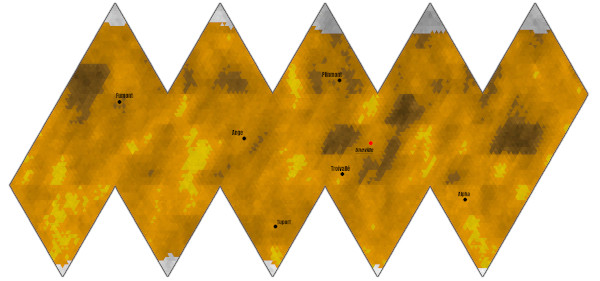
The people working at the spaceport are generally slow to respond, unfriendly and insulting to travellers, disrespectful towards their superiors and often give the impression that they don’t particularly care. Many also don’t speak either Anglic or Vilani, instead using a variation of Island French. Facilities for ship repairs are, to put it mildly, limited here. Unless things are really desperate though, it would be recommended to put off repairs and maintenance until getting to a different world.
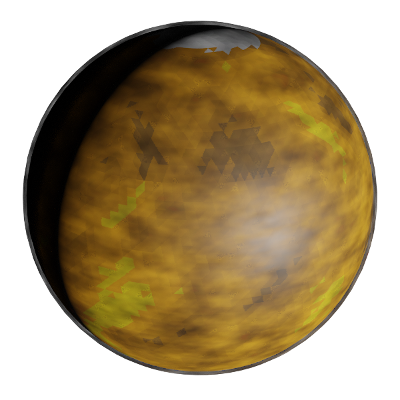
A short ride by subway train takes you to Uneville, which is the capital and largest city on the world, with a population of about 21 million. It’s a sprawling city, the outskirts of which show sign of damage but much of it is subterranean. The cause of the damage was war – but it was a war that ended 800 years ago. The damaged regions have just been left, and the city dug down rather than try to repair all of the bombed out ruins, some of which are still radioactive.
The city of Uneville itself is mostly underground, though many buildings poke out through the surface to reveal pressurised walls and domes. The streets are crowded, with ceilings only two to three metres tall and often dim lighting. Shops and restaurants are plentiful, though service if you don’t speak the native language can be poor.
The tunnels can be dry and dusty, and get warm as you proceed into lower levels where the life support struggles to work. Up near the surface though the Air and Power Commission, which manages the life support systems for the world, ensures that the air conditioning is running cool.
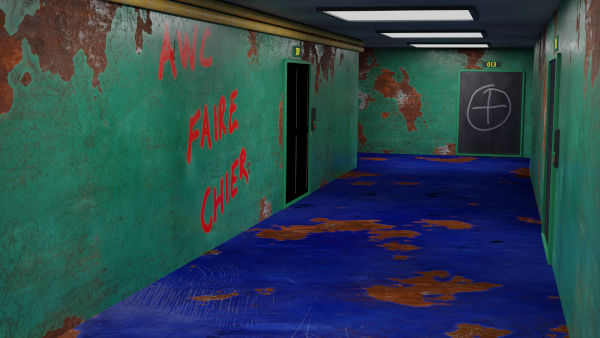
Common clothing styles tend to be colourful, often not covering much since being in an enclosed environment means its always dry and (often too) warm. Hair tends to be heavily dyed in many shades, tattoos, makeup and body piercings are also common, giving a punk-like vibe to everything.
Animals are also common on the streets and side passages, either pets or free ranging. They are often used to keep the rodent populations under control, and tend to be a variety of hairless fox-like species known as gethoks.
A lot of the city is crowded, though the richer areas are more spacious, with the privileged living about ground in tall towers and big windowed apartments that look out onto the bleak landscape.
As you get further down, so the quality of life decreases. Life support systems often fail, water pipes often fail and food and jobs can be in short supply. Attempts to create gangs in the big cities is often met with heavy use of force by the government, but crime is common. In the smaller cities, which are often built below the ruins of what existed 800 years ago, government control is weaker and gangs more common. However, the quality of life support can be even worse, with unofficial (and illegal) repairs being done by local engineers who charge their neighbours to keep things running.
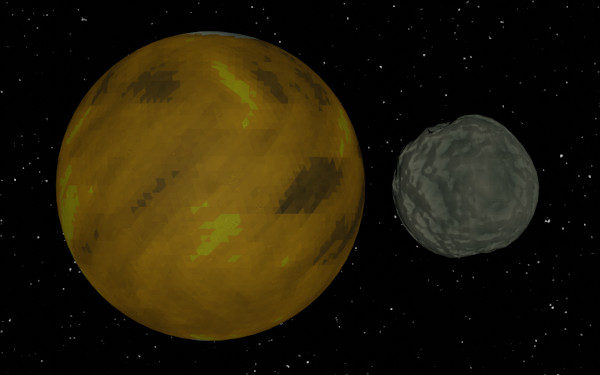
Though there is a gas world in the system, named Hybris, it is guarded by ‘local corporations’ who have agreements with the Topas government to provide it with hydrogen and water. They aggressively ensure that they have sole access to Hybris and its moons, forcing most people to buy starship fuel from the starport. Many consider these corporations to be little better than pirates.
Criminality caused by scant resources is common on the world itself, with gangs trying to control or break the water reclamation systems, so they can charge money for fixing them or selling water directly. They likewise are said to provide kick backs to the government commissions to be allowed to continue.
Most dangerous of all to travellers are probably the terrorist groups that operate in the cities. The most successful of these is probably the FCC – Women Against Corruption – who have blown up several government buildings in the last few years, and downed at least one ‘pirate’ ship with a bomb smuggled aboard it. They claim that they want to overthrow the current government and replace it with something fairer and more democratic, but are presented as simple murderers and arsonists by the Topas Police Commission.
The TPC, recognisable in their black and gold uniforms, provide security services for the Bureaucracy. They often act as judge, jury and executioner, but try to avoid getting involved with off-worlders unless they are blatantly causing trouble. Outside the main cities though, they’re rarely seen, so in the wastes and smaller settlements the harsh restrictions on weapons are rarely enforced.
Topaz is in New Islands Subsector, Reft, 1522. For more information on the system, see the detailed entry.